Today I am presenting Kobbari Atukulu or Aval Thengai Sadam. It is essentially Kobbari Annam (Coconut Rice) made with Atukulu instead of rice. I made it as a part of naivedyam for Sri Krishna Janmashtami. Also called Gokulashtami in Maharashtra and Krishnashtami in South India, this festival celebrates the birth of Lord Krishna.
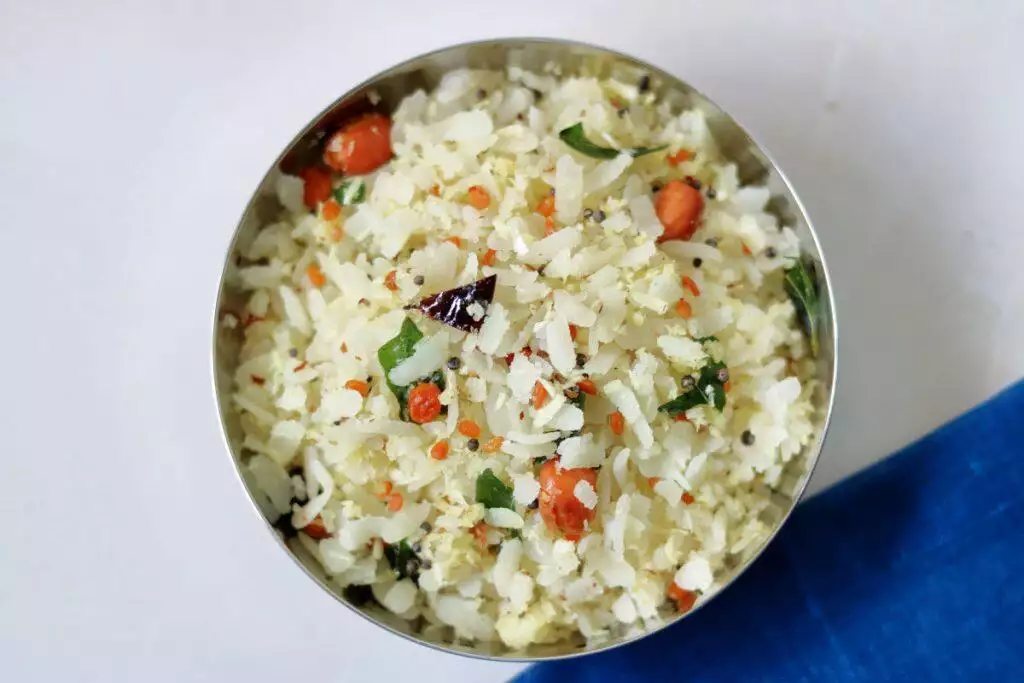
Some Tips to Make an Excellent Coconut Poha
- As always, it is the ingredients that lay the foundation for a good dish. Do use thick poha (Jada Poha as we call it in Mumbai). Using the think variety would mean the Poha disintegrates when washed and left to drain.
- You need not soak the Poha. Just washing it in water once or twice does the trick. I typically add the dry poha to the colander and was it under running water and then leave it to drain for about 10 minutes.
- Coconut Poha tends to dry out as time passes so we typically serve it as soon as it is made. If you have made it in advance, and it has dried out a bit, just sprinkle a bit of warm water and give it a good stir.
Other Naivedyam Recipes with Poha or Beaten Rice for Krishna Janmashtami
On Gokulashtami, we worship Sri Krishna as Balagopal and as such offer all things that young children may like as Naivedyam. As Sri Krishna was born at night, we make and offer all naivedyam on the eve of Janmashtami and then savour it the next day.
Lord Krishna is said to be very fond of beaten rice/flattened rice, and so dishes centered on this ingredient are a key part of the naivedyam on Krishna Janmashtami.
Beaten rice is called Atukulu in Telugu, Poha in Hindi and Marathi, Aval in Tamil and Avalakki in Kannada.
Here are a few other recipes that use Poha and are made for Krishna Jayanti:
- Atukula Paramannam | Aval Payasam,
- Vella Aval | Bellam Atukulu
- Mosaru Avalakki | Atukula Daddojanam
- Huli Avalakki | Udupi-Style Tamarind Poha | Puli Aval
- Sihi Avalakki | God Pohe | Goda Phovu
Other traditional offerings include butter, milk, curd, and an assortment of munchies like Thattai | Chekkalu, Palakayalu, Seedai, Murukku, etc.
I made Kobbari Atukulu | Thengai Aval this year for Gokulashtami because I love it’s savoury taste. Also it is lighter on the stomach that the traditional Coconut Rice and so that’s a bonus as well.
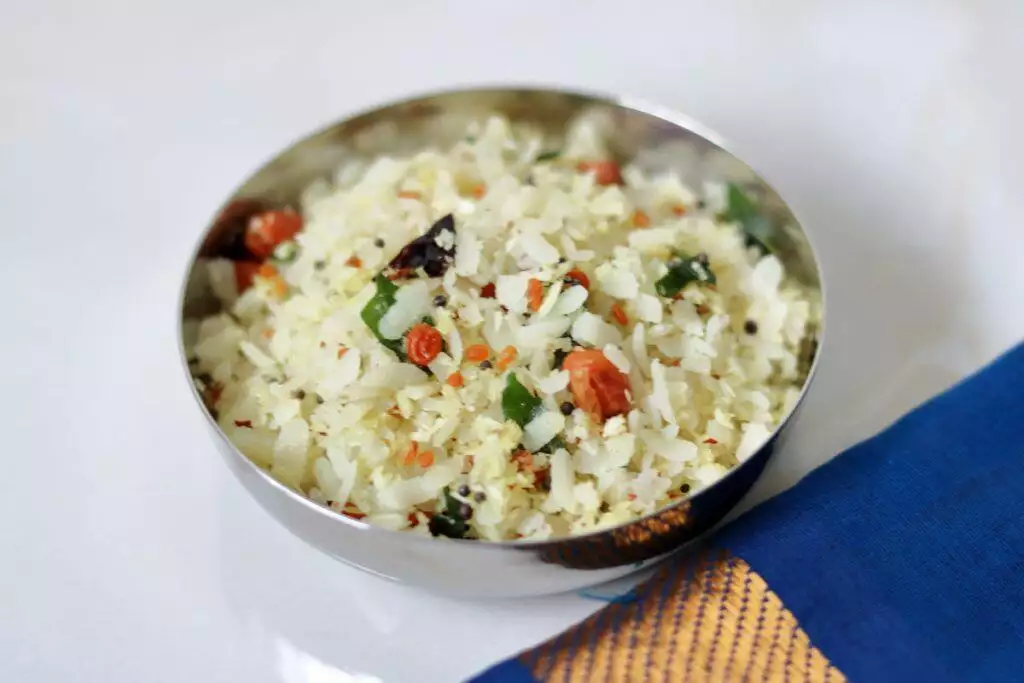
How to Make Kobbari Atukulu | Thengai Aval | Coconut Poha
-
Prepping the Poha
-
Wash 1 Cup Thick Poha under running water and set aside in a colander for 10 minutes so that all the excess water drains out.

-
- Making the Coconut Poha
-
In a kadhai, heat 1 tsp oil.We use sesame or coconut oil.
-
Add 1/2 tsp mustard seeds and wait till they splutter.

-
Add 1 tsp udad dal, 1 tsp chana dal and 1 tbsp peanuts.
-
Stir-fry till the dals are golden brown.

-
Now add 1 tsp finely chopped green chillies (or 2 split dried red chillies), a few curry leaves and a pinch of asafoetida.
-
Stir-fry for 5 to 10 seconds.
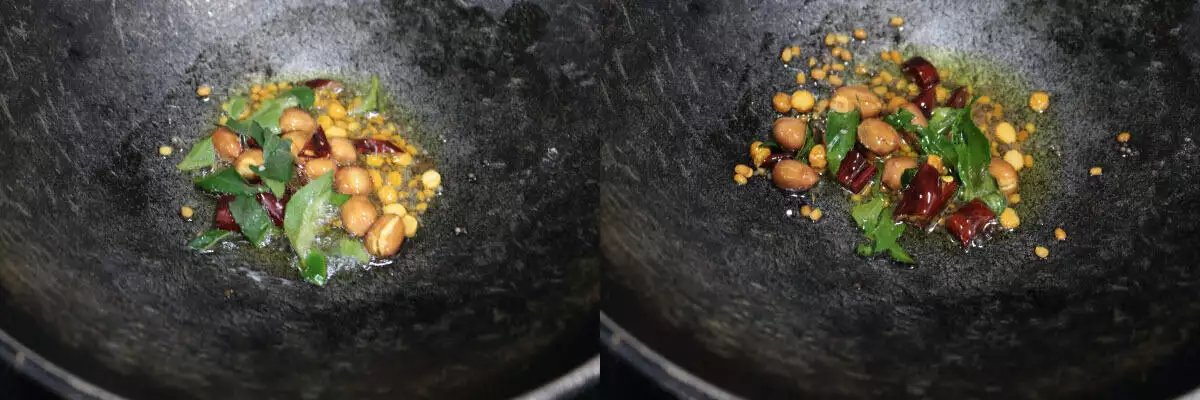
-
Add 1/4 cup grated coconut and some salt. Stir-fry for 1-2 minutes.
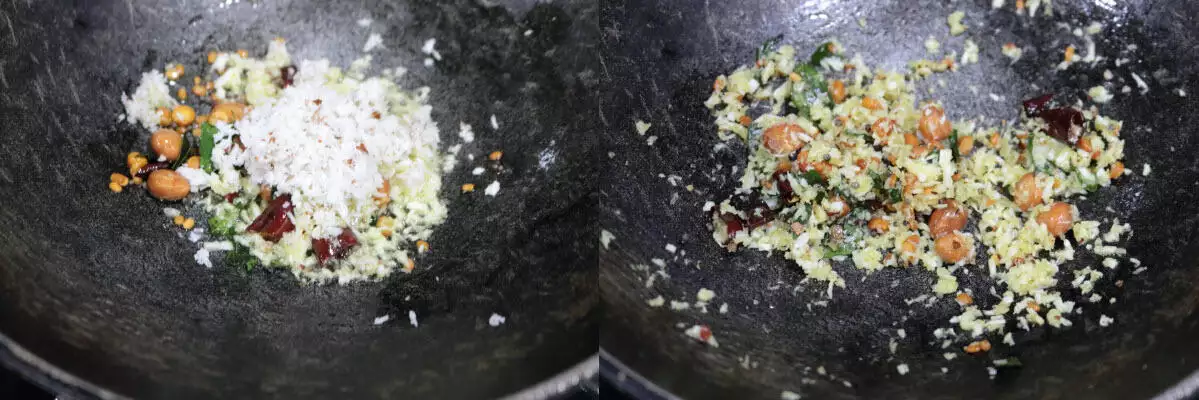
-
Add the drained poha and mix well with a light hand.
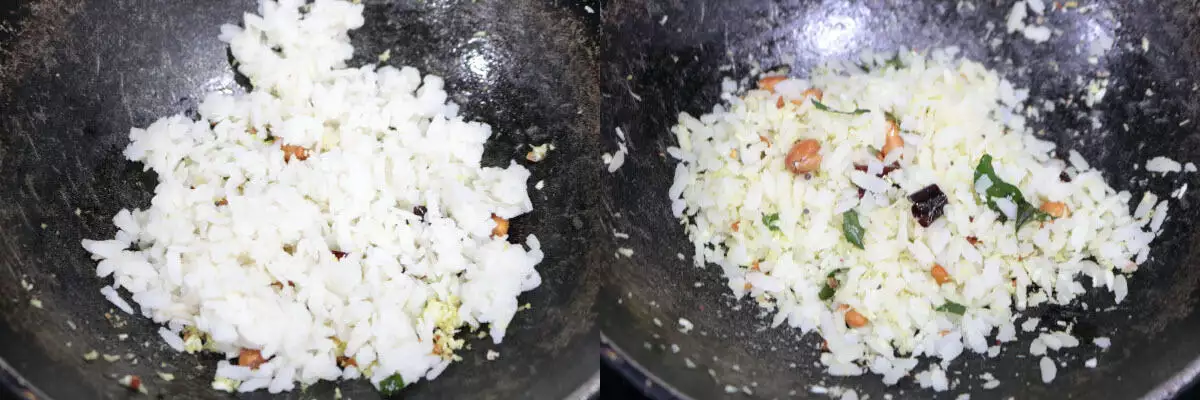
-
-
Serve warm Coconut Poha immediately.
Recipe for Kobbari Atukulu | Thengai Aval | Coconut Poha
Kobbari Atukulu | Aval Thengai Sadam
Ingredients
- 1 Cup Poha (Jada Poha, Aval, Atukulu, Avalakki)
- 1/4 Cup Coconut (Grated)
- 1 tsp Oil (Sesame Oil or Coconut Oil preferred)
- 1/2 tsp Rai
- 1 tsp Udad Dal
- 1 tsp Chana Dal
- 1 tbsp Peanuts (You can use split cashews as well)
- 1 tsp Green Chillies Finely Chopped
- 1 Pinch Asafoetida, Hing, Inguva
- A Few Curry Leaves
- Salt to Taste
Instructions
- Wash 1 Cup Thick Poha under running water and set aside in a colander for 10 minutes so that all the excess water drains out.
- In a kadhai, heat 1 tsp oil. We use sesame or coconut oil.
- Add 1/2 tsp mustard seeds and wait till they splutter.
- Add 1 tsp udad dal, 1 tsp chana dal and 1 tbsp peanuts.
- Stir-fry till the dals are golden brown.
- Now add 1 tsp finely chopped green chillies (or 2 split dried red chillies), a few curry leaves and a pinch of asafoetida.
- Stir-fry for 5 to 10 seconds.
- Add 1/4 cup grated coconut and some salt. Stir-fry for 1-2 minutes.
- Add the drained poha and mix well with a light hand.
- Serve warm Kobbari Atukulu or Coconut Poha immediately.
Notes
- Always use the thick poha to make this dish. If you use thin poha, the poha becomes soggy on washing.
- Make Kobbari Atukulu just before you are ready to serve it as it dries out quickly.
- If you have made it in advance and it has become dry, sprinkle a little warm water and mix well before serving.
Nutrition
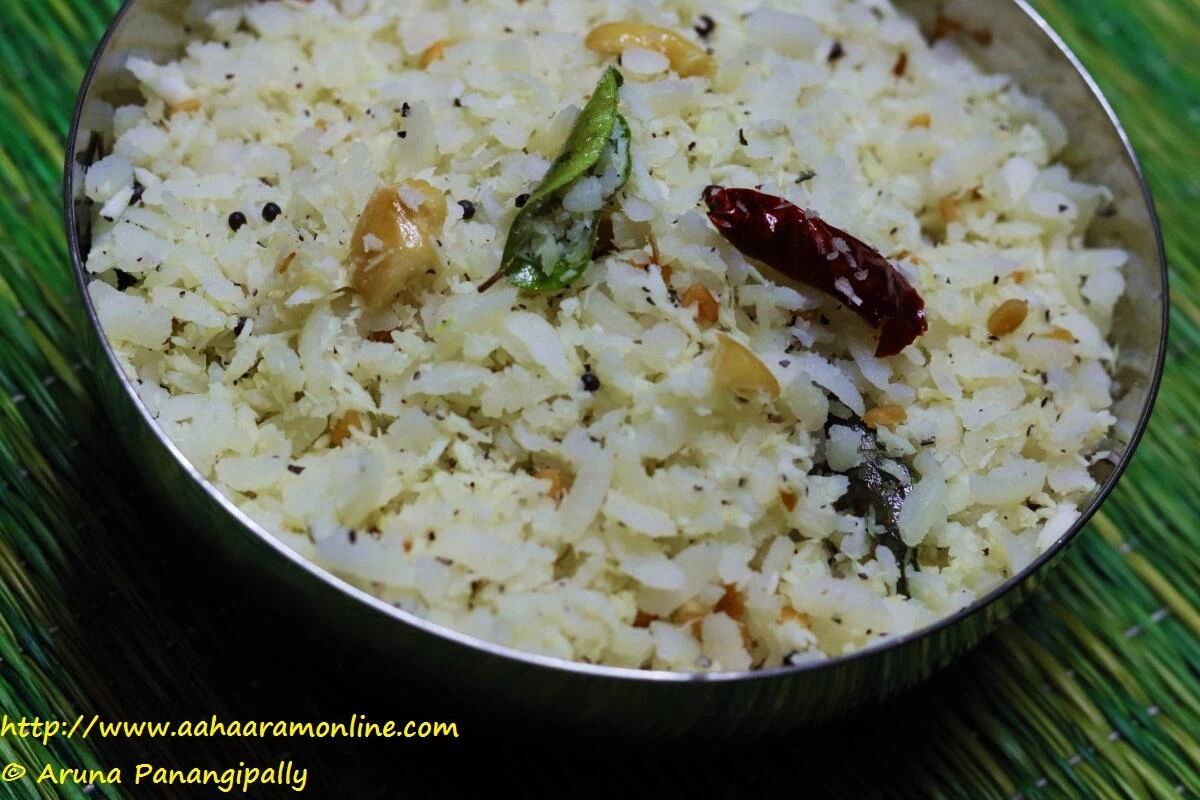

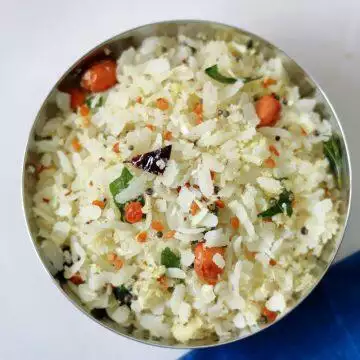

Yum I love this 🙂
Thank you 🙂
Loved it . I made them too for Gokulashtami along with the sweet version. I always make these savory version extra as i can gorge on them the next day for breakfast too.
Looks so beautiful & delicious !!
A simple dish for Janmashtami and a great breakfast too.